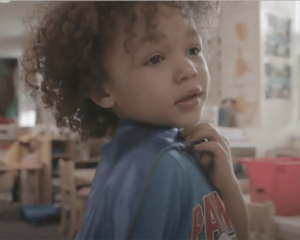The term trauma is a startling and complex word. Those who have lived a lifetime of joys and sorrows, happiness and hardships can conceptually or personally grasp what a traumatic experience is and what it means for one’s mental health. For a child experiencing homelessness however, what exactly is trauma and how does it impact their young developing brain?
As defined by the National Council for Behavioral Health (SAMHSA division), “Trauma results from an event or series of events that is experienced by an individual as physically or emotionally harmful or threatening. [It] has lasting adverse effects on the individual’s physical, social, emotional, or spiritual well-being.” Becoming homeless as a child, losing the comfort and stability of a safe and familiar space to live is undoubtedly traumatic. In many cases, the trauma of homelessness is coupled with families fleeing from domestic situations, parental figures struggling with substance abuse, or extreme financial losses that impact a family’s ability to secure food, necessities, and ultimately sustain the roof over their loved-ones’ heads. The road to shelter is often an indirect path – from a kind neighbor’s couch to the back seat of a car – before ultimately finding a place to stay for an uncertain and indefinite about of time.
Trauma experienced is categorized in three subsets: Acute Trauma, Complex Trauma, and Historical Trauma.
“Acute Trauma is a single exposure to an overwhelming event such as natural and human-caused disasters” or an individualized significance such as the loss of a parent or an assault. “Complex Trauma occurs repeatedly and cumulatively, usually over a period of time and within specific relationships and contexts” such as witnessing or experiencing harm or neglect by caregivers, consistent insecurity of food and nurture and the like. “Historical Trauma is tied to events that are so widespread as to affect an entire culture; such events also have effects intense enough to influence generations of the culture beyond those who experienced them directly” such as race-based trauma. (Trauma-Informed Care in Behavioral Health Services)
In the homeless community, many individuals have experienced both acute and complex traumas, referred to as compound trauma. This is sometimes paired with historical traumas as well. In most cases and especially in children, the impacts of trauma can lead to toxic stress – a developmentally harmful impact on a growing mind. (National Organizations Working with the Homeless)
As reported by the Center for the Developing Child at Harvard University, in the first few years of life, more than 1 million new neural connections form every second in a child’s brain. The impact of toxic stress on brain development can harm the child for life and the adverse events that evoke the stress response due to trauma are intense, and often frequent, significant, or prolonged. As a result, the increased level of the stress hormone cortisol can cause lasting damage, including difficulty processing emotion, inability to self-regulate, memory issues, difficulty managing stress as well as emotional problems including anxiety and depression. These impacts can affect the child’s success not only in school, but in life as a whole.
“When toxic stress occurs early in a child’s life, it sparks changes to the genes that can hinder the higher-level social, emotional, and cognitive competencies from developing their full genetic potential.” Stress not only effects cognitive and emotional development, but long-term physical health as well. (Center for the Developing Child, Harvard University). Children experiencing homelessness are more likely to develop learning disabilities, have emotional and behavioral problems, and are sick four times more often than other children. They have four times as many respiratory infections, twice as many ear infections, and five times more gastrointestinal problems. (Homes for Families)
At Horizons, teachers, staff, and family advocates are trauma-informed and sensitive to how early childhood experiences impact each child in our early education programs as well as those who utilize our Playspaces in 90+ shelters throughout the state. With specific training, programs, and services designed to help mitigate trauma, Horizons’ staff is educated and well-equipped to serve families experiencing homelessness by fostering mental health, social-emotional growth, and a child’s overall development. Working with partners like Boston’s JF&CS, mental health support is made available to both parents and children alike in education centers, and resources are provided by advocates to support a family’s wellbeing.

Horizons’ curriculum, classrooms, and Playspaces are designed specifically to reflect trauma-informed best practices that allow children to explore their imaginations in healing ways while developing the skills to self-regulate and learn in a conducive environment. Children as young as infants are nurtured in classrooms and Playspaces to build connections, meet developmental milestones, and feel a sense of consistency in a circle of security. As children age up within the programs, they are gently guided to develop key educational skills and are supported in their social-emotional journeys to prepare them for kindergarten beyond their time with Horizons.
“All of our programming is designed to address the trauma we know children have experienced,” offered Sheila O’Neil, Horizons’ Executive Director, Community Children’s Centers & Family Partnerships. “We counteract trauma by helping children build stable relationships and fostering resilience in families. By interceding, Horizons helps children and families triumph by setting a foundation for future success.”
This piece was written by Andrea Drag, a regular contributor to Horizons’ Blog.